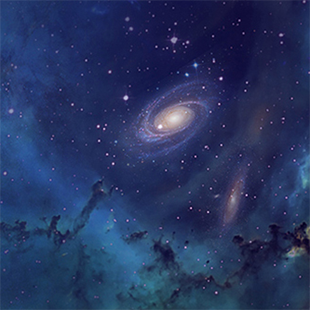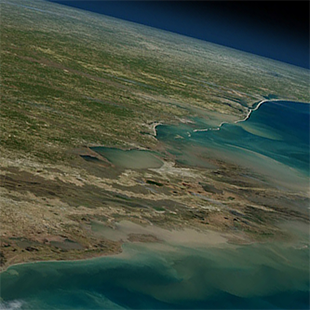Heliophysics Standards Alignments
Heliophysics Standards Alignments
Grouped by Disciplines
Printer Friendly: Heliophysics Standards Alignments (PDF)
Earth and Space Science | ||
Grade | Standard | NGSS PE (link) |
|---|---|---|
K | Use and share observations of local weather conditions to describe patterns over time. | |
K | Use a model to represent the relationship between the needs of different plants or animals (including humans) and the places they live. | |
1 | Use observations of the sun, moon, and stars to describe patterns that can be predicted. | |
1 | Make observations at different times of year to relate the amount of daylight to the time of year. | |
3 | Represent data in tables and graphical displays to describe typical weather conditions expected during a particular season. | |
3 | Obtain and combine information to describe climates in different regions of the world. | |
4 | Obtain and combine information to describe that energy and fuels are derived from natural resources and their uses affect the environment. | |
5 | Support an argument that differences in the apparent brightness of the sun compared to other stars is due to their relative distances from Earth. | |
5 | Represent data in graphical displays to reveal patterns of daily changes in length and direction of shadows, day and night, and the seasonal appearance of some stars in the night sky. | |
Middle School | Develop and use a model of the Earth-sun-moon system to describe the cyclic patterns of lunar phases, eclipses of the sun and moon, and seasons. | |
Middle School | Develop and use a model to describe the role of gravity in the motions within galaxies and the solar system. | |
Middle School | Analyze and interpret data to determine scale properties of objects in the solar system. | |
Middle School | Develop a model to describe the cycling of Earth’s materials and the flow of energy that drives this process. | |
Middle School | Develop a model to describe the cycling of water through Earth’s systems driven by energy from the sun and the force of gravity. | |
Middle School | Collect data to provide evidence for how the motions and complex interactions of air masses results in changes in weather conditions. | |
Middle School | Develop and use a model to describe how unequal heating and rotation of the Earth cause patterns of atmospheric and oceanic circulation that determine regional climates. | |
Middle School | Ask questions to clarify evidence of the factors that have caused the rise in global temperatures over the past century. | |
High School | Develop a model based on evidence to illustrate the life span of the sun and the role of nuclear fusion in the sun’s core to release energy that eventually reaches Earth in the form of radiation. | |
High School | Communicate scientific ideas about the way stars, over their life cycle, produce elements. | |
High School | Use mathematical or computational representations to predict the motion of orbiting objects in the solar system. | |
High School | Analyze geoscience data to make the claim that one change to Earth’s surface can create feedbacks that cause changes to other Earth systems. | |
High School | Use a model to describe how variations in the flow of energy into and out of Earth’s systems result in changes in climate. |
Physical Science | ||
Grade | Standard | NGSS PE (link) |
|---|---|---|
K | Make observations to determine the effect of sunlight on Earth’s surface. | |
K | Use tools and materials to design and build a structure that will reduce the warming effect of sunlight on an area. | |
4 | Make observations to provide evidence that energy can be transferred from place to place by sound, light, heat, and electric currents. | |
4 | Apply scientific ideas to design, test, and refine a device that converts energy from one form to another. | |
5 | Use models to describe that energy in animals’ food (used for body repair, growth, motion, and to maintain body warmth) was once energy from the sun. | |
Middle School | Develop a model that predicts and describes changes in particle motion, temperature, and state of a pure substance when thermal energy is added or removed. | |
Middle School | Construct and present arguments using evidence to support the claim that gravitational interactions are attractive and depend on the masses of interacting objects. | |
Middle School | Apply scientific principles to design, construct, and test a device that either minimizes or maximizes thermal energy transfer. | |
Middle School | Develop and use a model to describe that waves are reflected, absorbed, or transmitted through various materials. | |
High School | Design, build, and refine a device that works within given constraints to convert one form of energy into another form of energy. | |
High School | Evaluate the validity and reliability of claims in published materials of the effects that different frequencies of electromagnetic radiation have when absorbed by matter. |
Life Science | ||
Grade | Standard | NGSS PE (link) |
|---|---|---|
K | Use observations to describe patterns of what plants and animals (including humans) need to survive. | |
2 | Plan and conduct an investigation to determine if plants need sunlight and water to grow. | |
3 | Make a claim about the merit of a solution to a problem caused when the environment changes and the types of plants and animals that live there may change. | |
4 | Construct an argument that plants and animals have internal and external structures that function to support survival, growth, behavior, and reproduction. | |
Middle School | Construct a scientific explanation based on evidence for the role of photosynthesis in the cycling of matter and flow of energy into and out of organisms. | |
Middle School | Develop a model to describe the cycling of matter and flow of energy among living and nonliving parts of an ecosystem. | |
High School | Use a model to illustrate how photosynthesis transforms light energy into stored chemical energy. | |
High School | Use mathematical representations to support claims for the cycling of matter and flow of energy among organisms in an ecosystem. | |
High School | Develop a model to illustrate the role of photosynthesis and cellular respiration in the cycling of carbon among the biosphere, atmosphere, hydrosphere, and geosphere. |






























